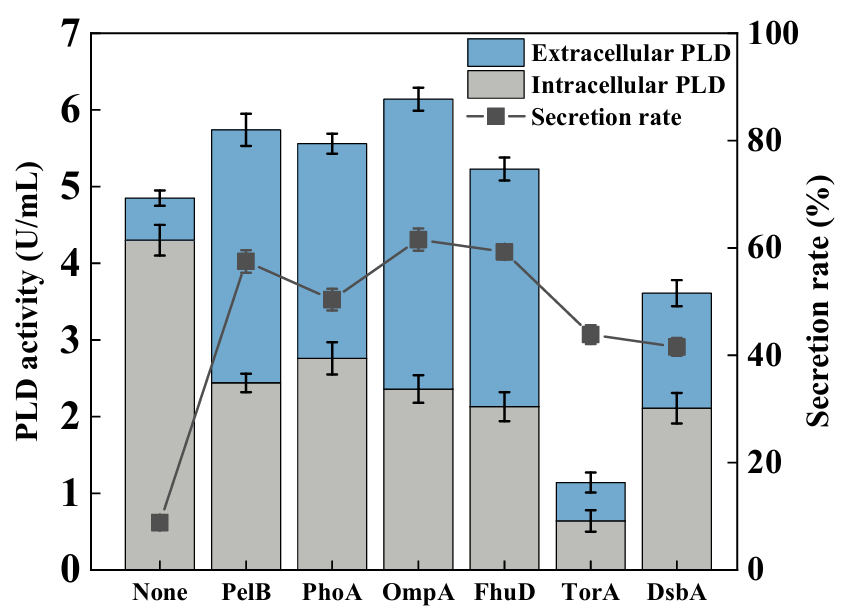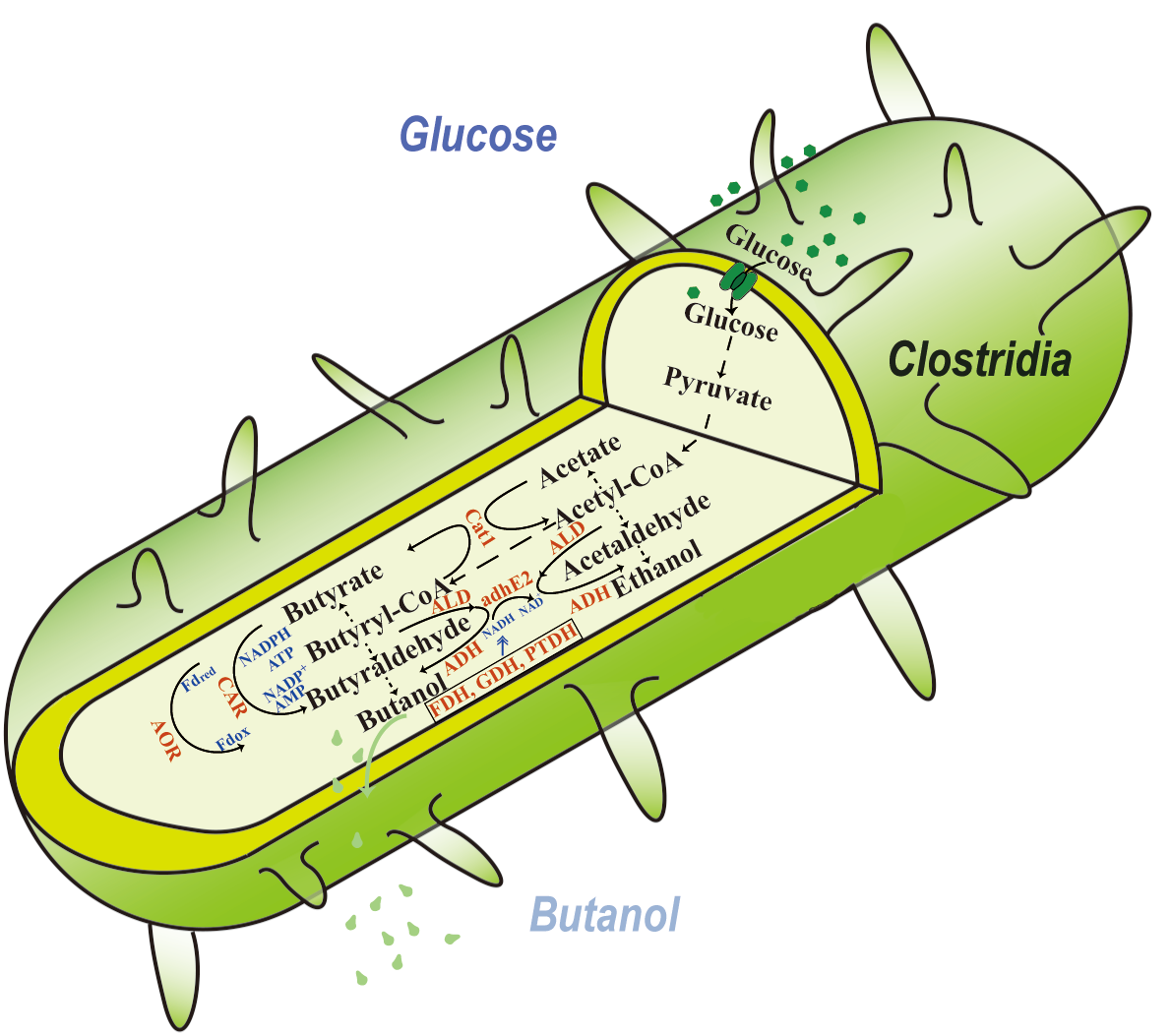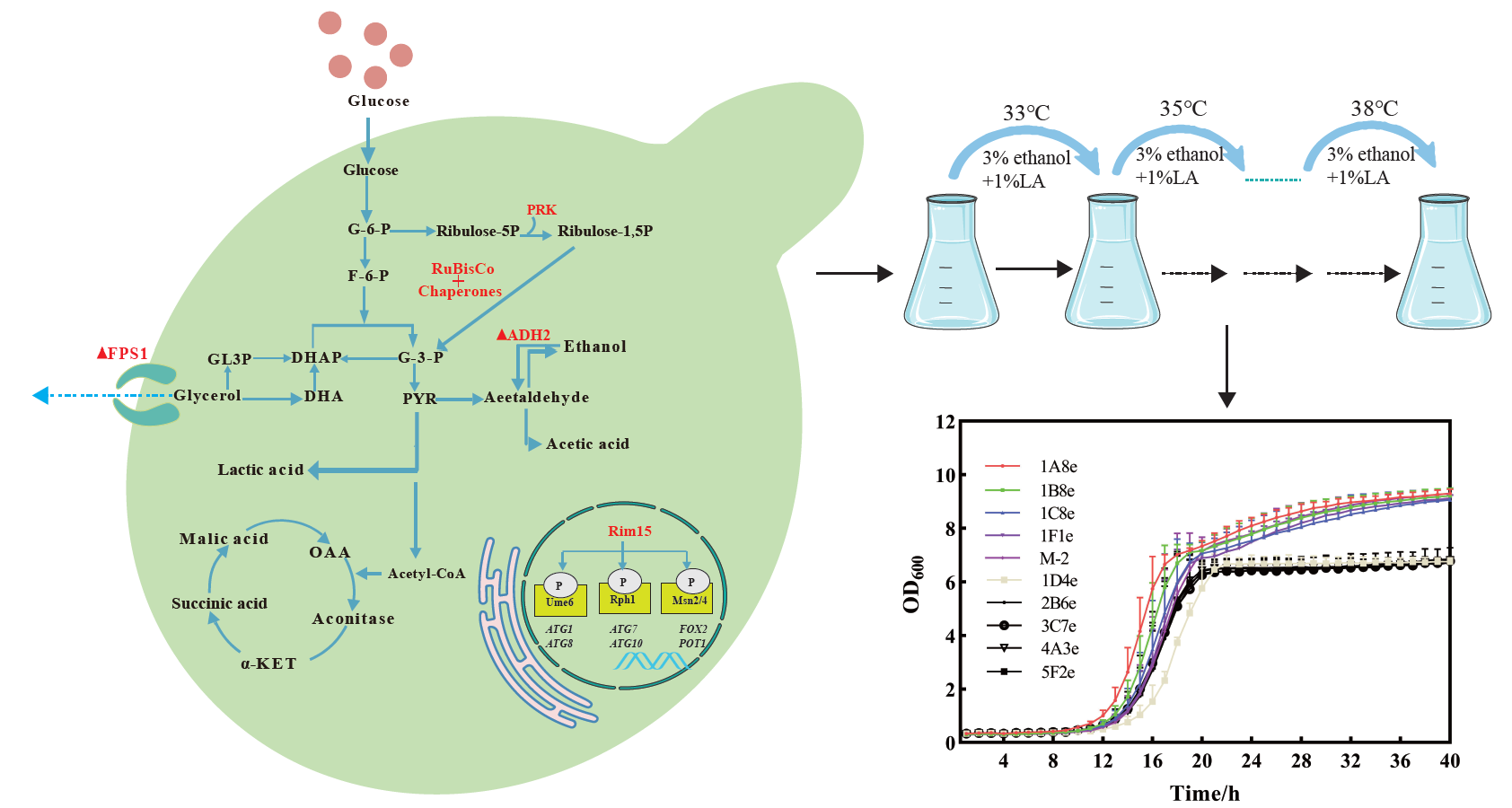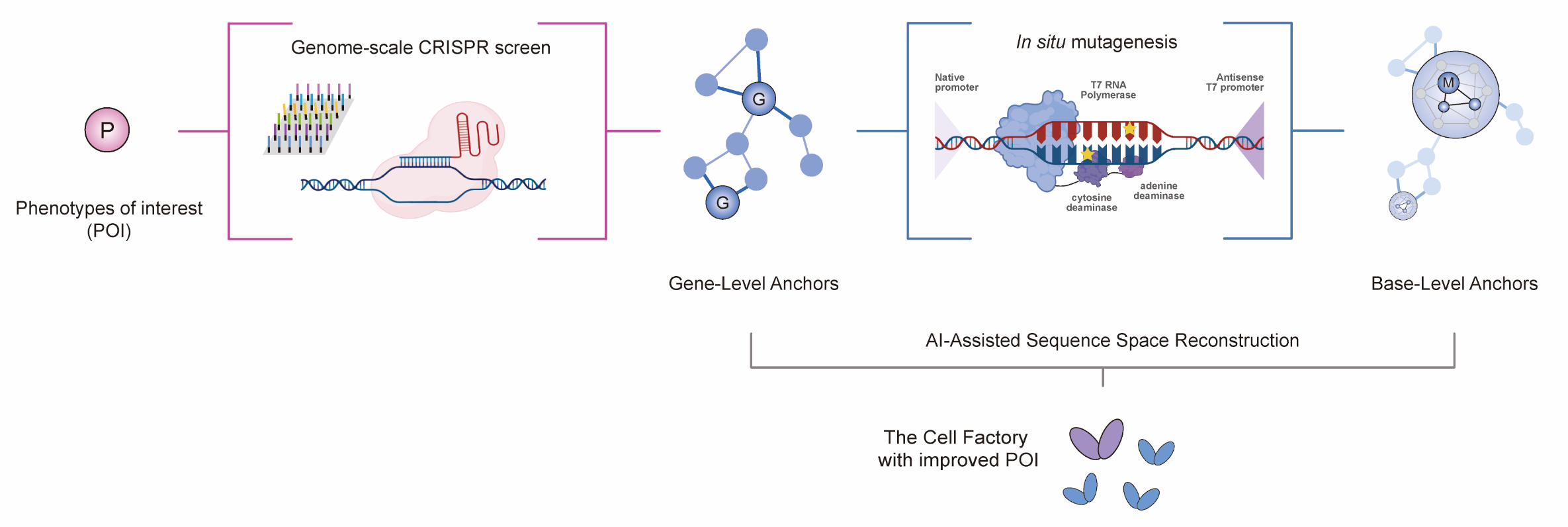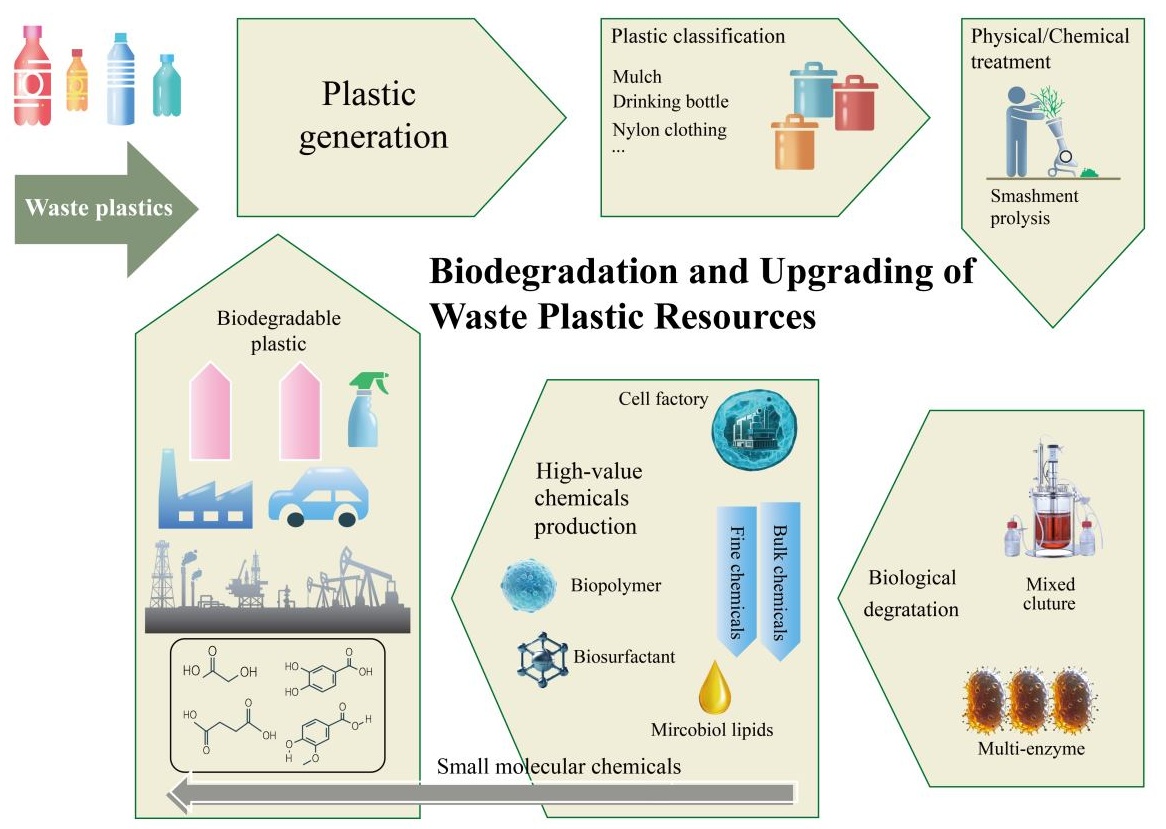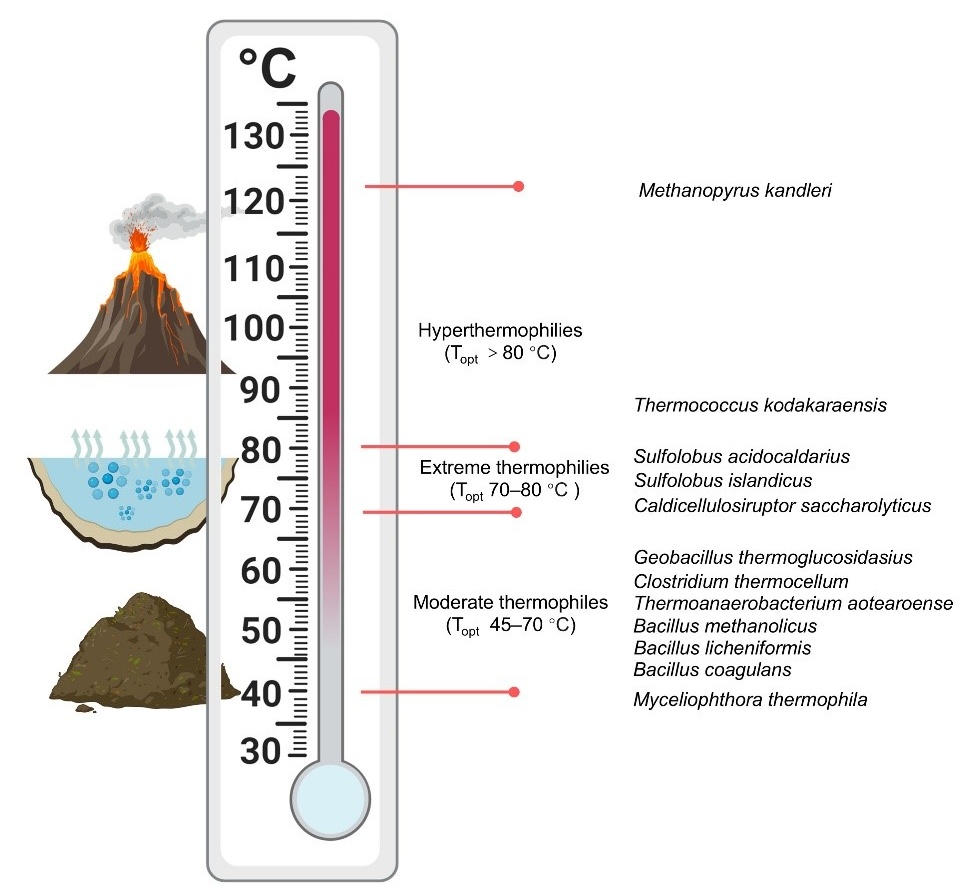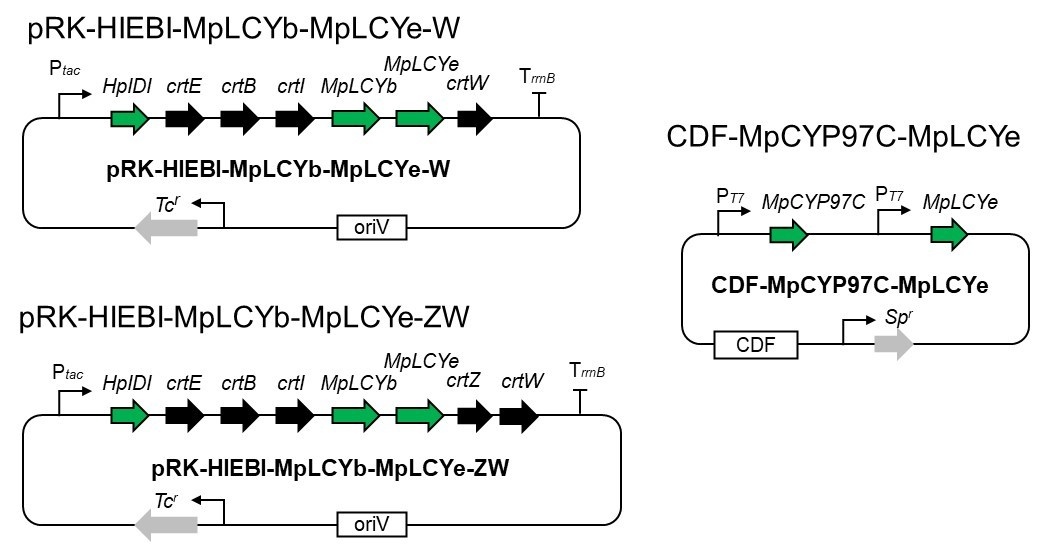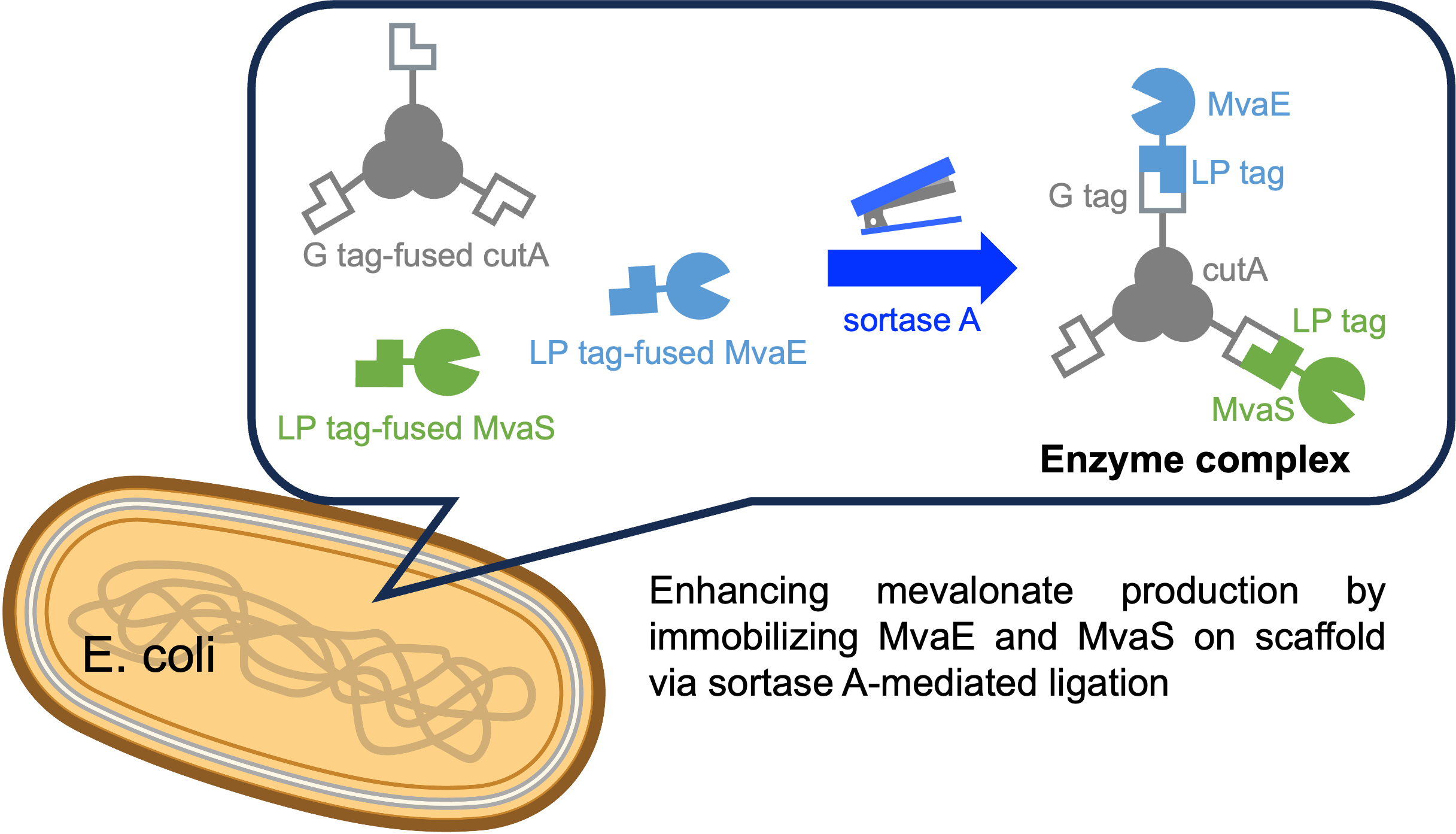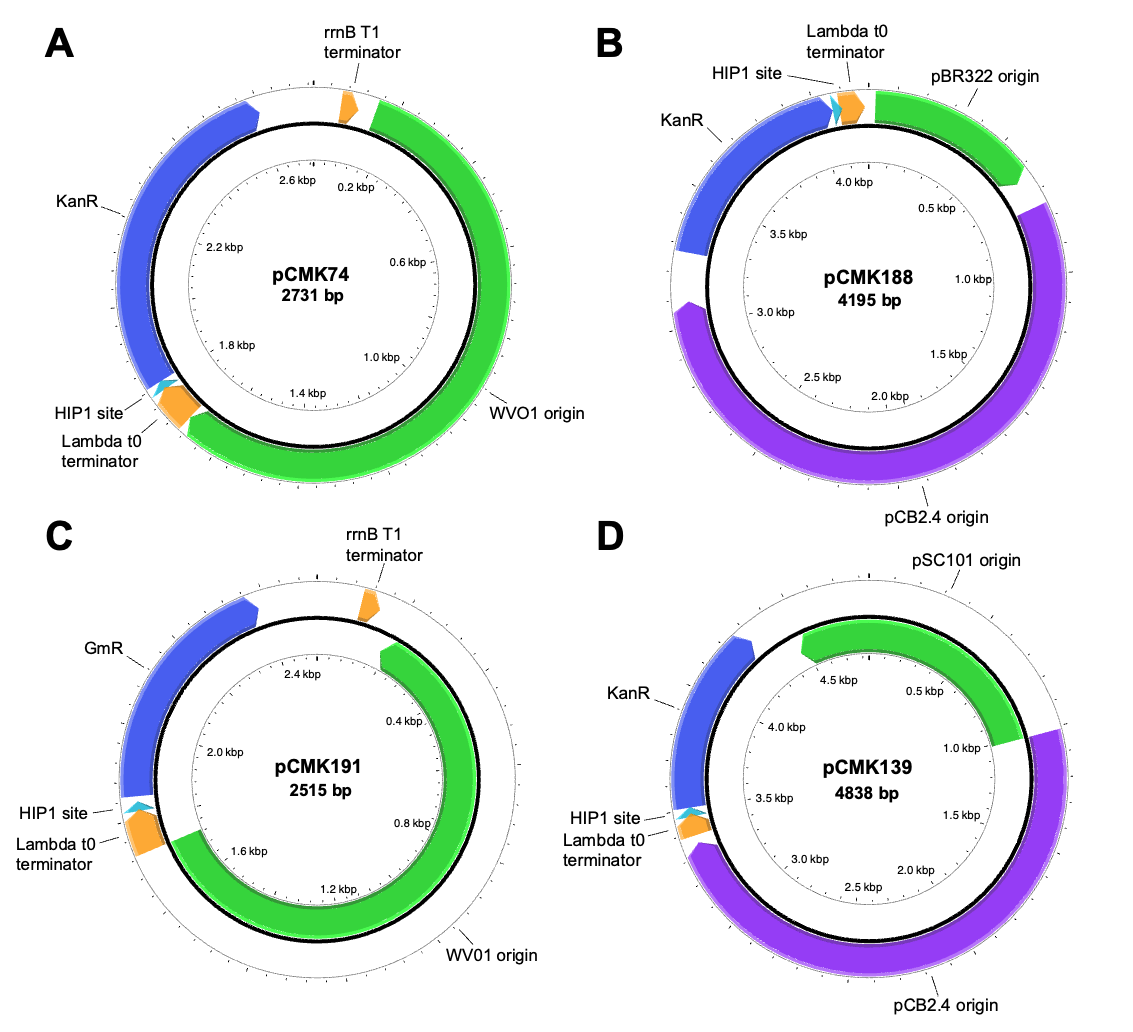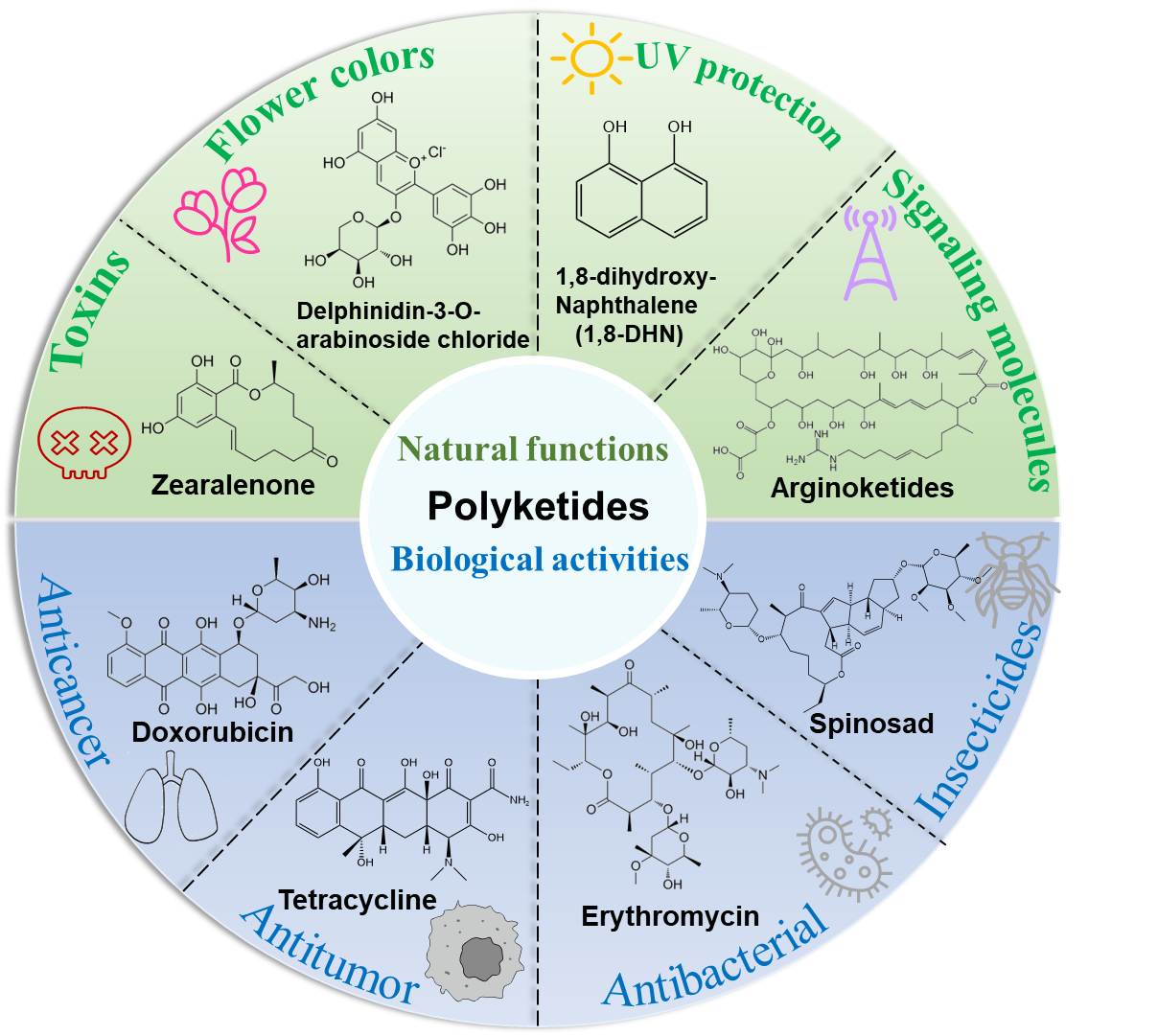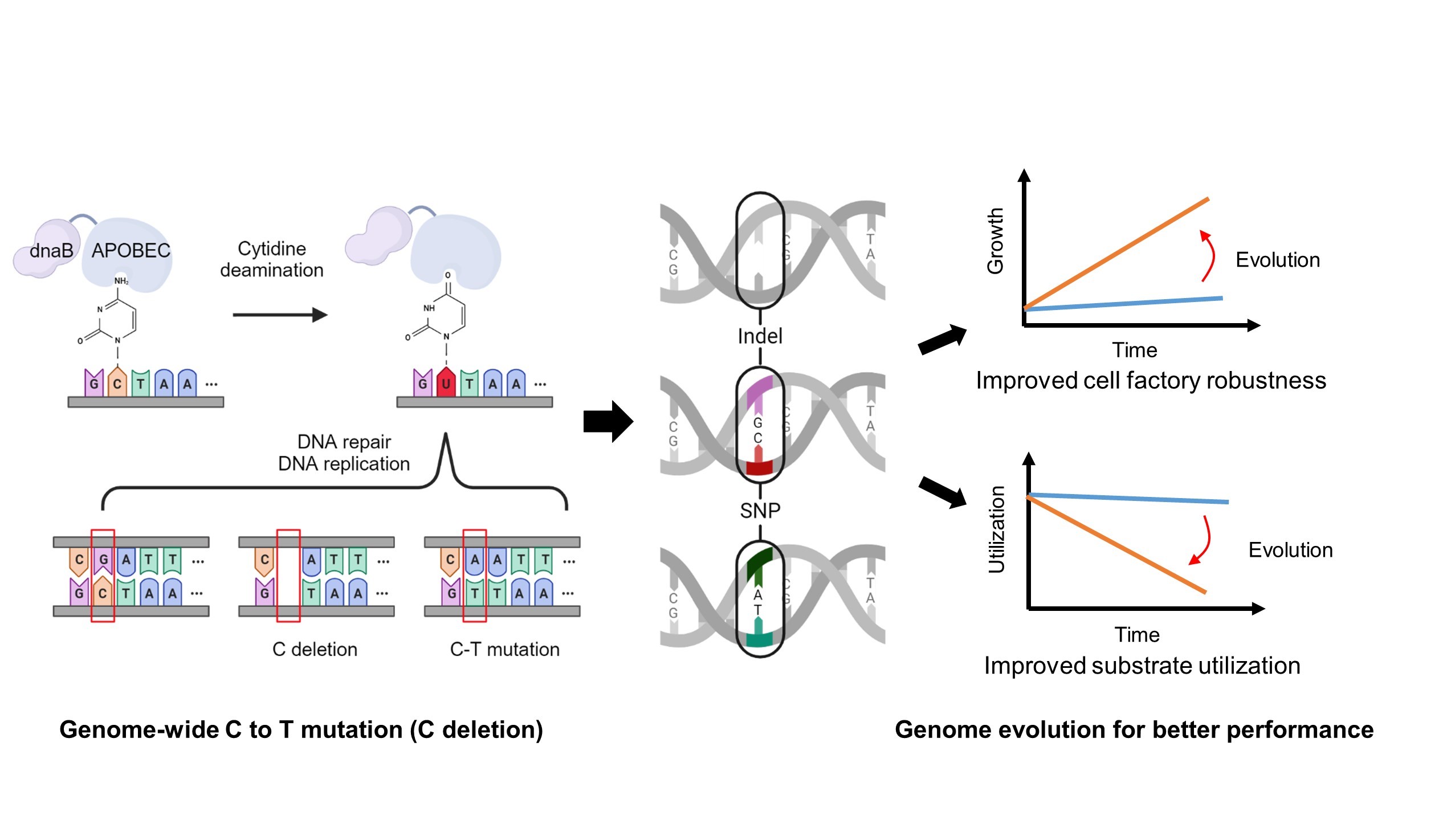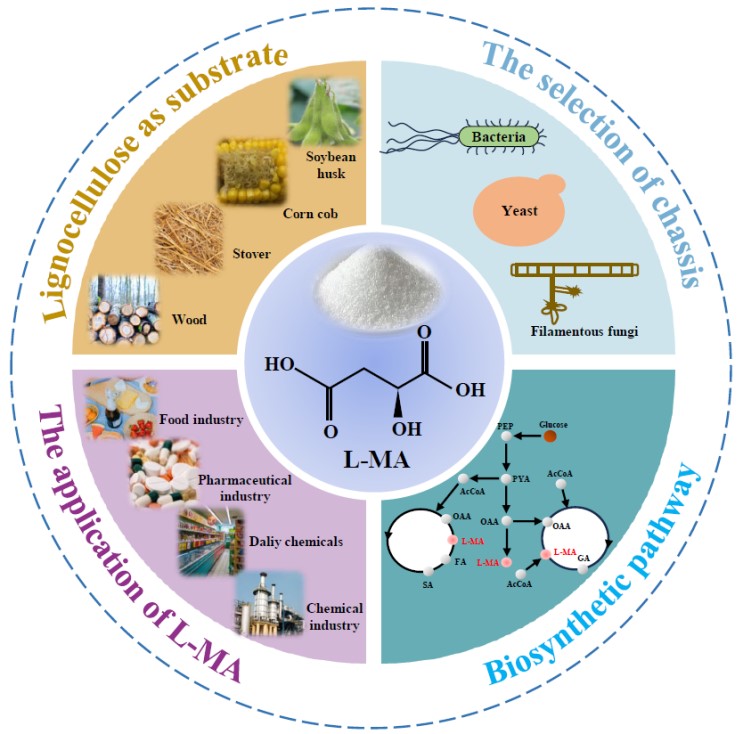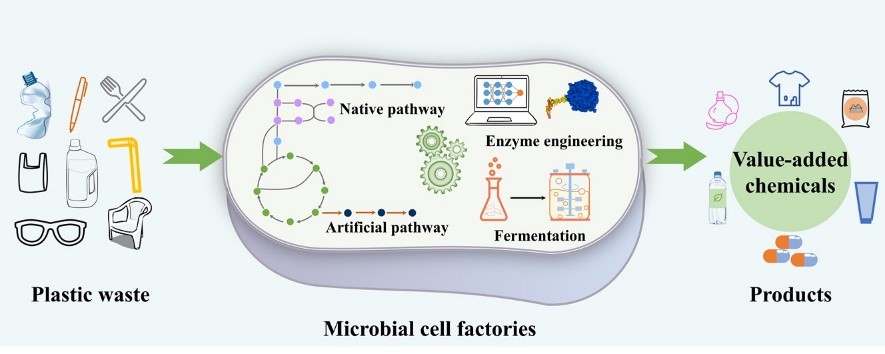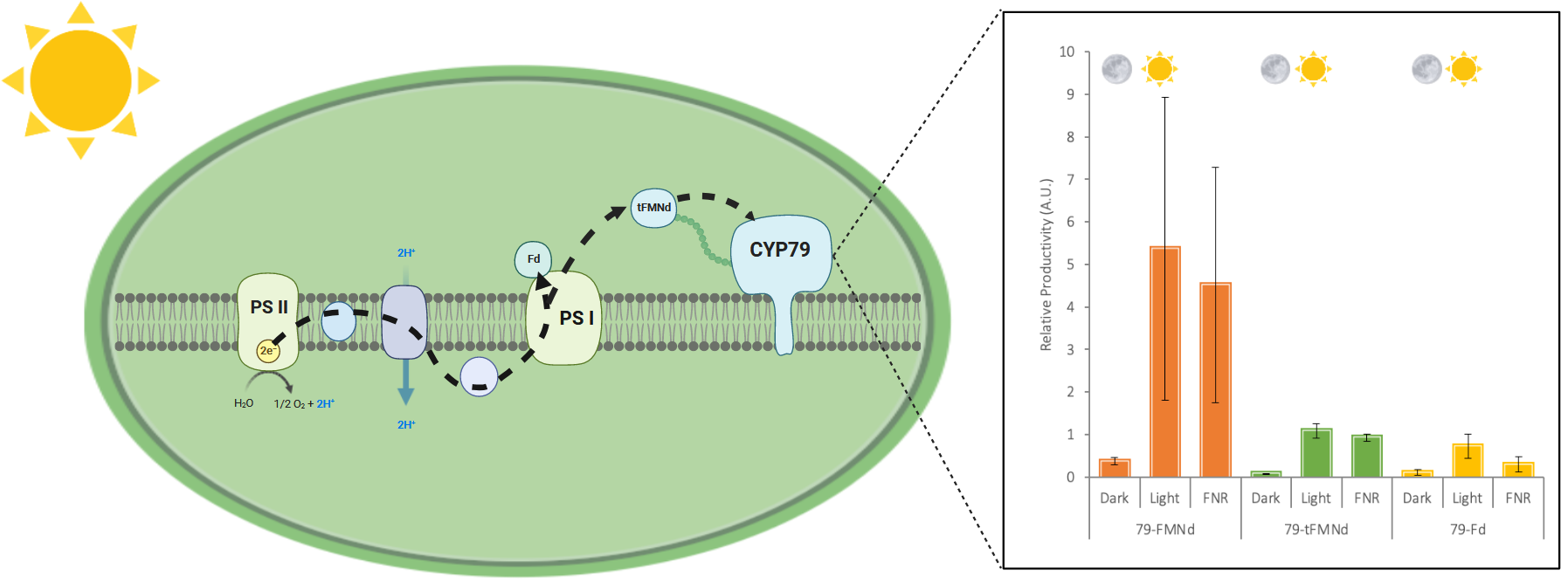Articles (45)
Open Access
Article
19 May 2025Quorum Sensing Systems Engineering for Enhanced iso-Butylamine Production in Escherichia coli
Quorum sensing (QS), characterized by pathway-independence and autonomous control, has been applied in bio-manufacturing, while the lack of versatile and functional regulatory components limits its broader applications. To address this issue, a series of efficient QS systems with diverse properties were established in Escherichia coli. Firstly, combinatorial optimization, including element selection and promoter replacement, led to an improvement of 8.82- and 3.03-fold in output range and response threshold, respectively. Then, a library of LuxR mutants was constructed for screening novel variants with decreased sensitivity to acyl-homoserine lactone through the high-throughput screening technique. Notably, the optimal variant V36E/H89L/P97L exhibited a decrease of 266-fold in the sensitivity. As a proof-of-concept, iso-butylamine biosynthesis was tested by re-directing pyruvate catabolism using QS circuits, and in particular, a total of 15.4 g/L iso-butylamine was generated in strain IB21 during the fed-batch culture, marking a 2.96-fold increase over the static control. Finally, the generated bioproduct reached 44.23 g/L in a bioreactor, representing the highest reported titer so far. In summary, this study not only enriches the genetic toolbox of QS systems, but also facilitates industrial applications in value-added chemical production.
Open Access
Review
14 May 2025Current Status of Biological Production Using C2 Feedstocks
C2 feedstocks have emerged as promising carbon sources for the biological production of various value-added chemicals. Compared to the traditional C6/C5 sugars-contained/constituted feedstocks, C2 feedstocks have diverse and abundant sources, including non-food biomass, industrial by-products, and C1 gases. This diversification not only eliminates competition with human food demands but also aligns with environmental sustainability goals. Moreover, the metabolic route for C2 compounds to enter central carbon metabolism is more direct, which minimizes the carbon loss and enhances the efficiency of bio-based production processes. This review extensively analyzes three prominent C2 chemicals: ethylene glycol, ethanol, and acetate. After introducing the sources of those compounds, it details the metabolic pathways through which they are converted into acetyl-CoA in vivo. Several chemicals produced from these C2 feedstocks in fermentation are also exemplified. Furthermore, different perspectives are proposed to promote the efficient utilization of C2 feedstocks.
Open Access
Article
14 April 2025Efficient Extracellular Production of Phospholipase D in Escherichia coli via Genetic and Process Engineering Modification
Phospholipase D (PLD) is the key enzyme in the catalytic production of rare phospholipids including phosphatidylserine. It was considered a promising method via genetic manipulation for the heterologous production of PLD in the model chassis. Few works focused on the extracellular production of PLD in engineered microbes. Herein, genetic and process engineering modification strategies were developed to achieve secretory production of PLD in Escherichia coli. The N-terminal fusion secretion signal peptide OmpA and the plasmid pBAD-gⅢC with pBAD promoter were proven to be the most effective in promoting the secretory production of PLD. Given the limitation of the cell membrane, the regulation of the key protein expression in the cell membrane as well as the addition of surfactants, were explored to accelerate the secretory production of PLD further. It was indicated that adding 0.5% (w/v) Triton X-100 was more conducive to producing PLD. Finally, fed-batch fermentation was conducted, and the maximum extracellular PLD activity achieved was 33.25 U/mL, which was the highest level reported so far. Our work demonstrated the effectiveness of genetic and process engineering strategies for the secretory production of PLD in E. coli, which provided an alternative platform for the industrial production of PLD.
Open Access
Review
24 March 2025Recent Advances and Challenges in Engineering Metabolic Pathways and Cofactor Regeneration for Enhanced n-Butanol Biosynthesis
The biological production of n-butanol has seen renewed interest due to the need for the production of sustainable aviation fuel, for which n-butanol serves as a direct precursor. However, biological production of this alcohol is still limited by the fermentation’s low titers and low yields. Many approaches have been taken to increase n-butanol production, such as using alternative host organisms, utilizing heterologous enzymes for acid reduction and cofactor regeneration, and protein engineering of critical enzymes in the n-butanol production metabolic pathway. This review highlights key achievements made in each of these areas and shows the potential for these approaches in increasing n-butanol production. The review closes by pinpointing the challenges and limitations in these approaches and recommends that the ultimate approach to n-butanol production should inevitably utilize noncanonical redox cofactors to drive metabolic flux for butanol biosynthesis from glucose.
Open Access
Article
20 March 2025Metabolic Engineering and Genome-Wide Adaptive Evolution for Efficient Reduction of Glycerol in Industrial Saccharomyces cerevisiae
The production of glycerol as a major by-product during yeast-based bioethanol fermentation arises directly from the need to re-oxidize excess NADH, which reduces conversion efficiency. In this study, an optimized Cas9-based genome editing method was performed to develop a mixotrophic CO2-fixing industrial Saccharomyces cerevisiae by heterologous expression of ribulose-1,5-bisphosphate carboxylase-oxygenase (RuBisCO form Pseudomonas sp.) and phosphoribulokinase (PRK form Spinach). Additionally, the gene encoding alcohol dehydrogenase (ADH2) responsible for converting ethanol to acetaldehyde was deleted, while the great wall-family protein kinase Rim15 gene was overexpressed to facilitate the reduction in glycerol content. The resulting CO2-fixing yeast M-2 led to a 21.5% reduction of the by-product glycerol in corn mash fermentation cultures at 39 ℃. Moreover, we established a novel gene mutators mediated genome-wide mutations system that accumulates distinct mutations in the industrial S. cerevisiae strains under the stress conditions to improve the robustness in the S. cerevisiae strains efficiently.
Open Access
Perspective
17 March 2025Navigable Genome Engineering: Stepwise Correlation for Precision-Guided Optimization of Microbial Cell Factory Phenotypes
Microbial cell factories, akin to “chips” in biomanufacturing, concentrate the most intricate scientific challenges, technical bottlenecks, and densest intellectual property. However, despite extensive efforts in rational engineering, the inherent complexity of biological systems and the limited knowledge of their underlying mechanisms still incur substantial trial-and-error costs. This Perspective seeks to explore the potential of a prior-knowledge-independent approach for optimizing microbial cell factory phenotypes. We discuss the feasibility of stepwise genotypic navigation in genome engineering and emphasize its ability to generate high-quality genotype–phenotype association data, thereby advancing AI-assisted genome modeling and further enabling precision-guided optimization.
Open Access
Review
28 February 2025Synthetic Biology Boosts the Biological Depolymerization and Upcycling of Waste Plastic Resources
The high molecular weight, hydrophobicity, and strong chemical bonds of petroleum-based synthetic plastics make them highly resistant to both abiotic and microbial degradation. This resistance plays a significant role in the growing problem of “white pollution” where the accumulation of plastic waste has become a major environmental issue worldwide. Currently, plastic waste management relies largely on landfill disposal and incineration, with only about 20% of plastic waste being recycled. However, both methods create secondary environmental risks, such as contamination of groundwater, soil, air, and oceans. Therefore, developing a sustainable and efficient approach for recycling and reusing plastic waste is essential for tackling plastic pollution and promoting a circular plastic economy. One promising solution involves utilizing microorganisms and enzymes to break down plastics into oligomers or monomers, which can then be transformed into valuable chemicals. This method provides a more environmentally friendly and milder alternative to conventional waste management techniques. This review explores recent progress in biodepolymerization and biotransformation processes for plastic waste, including the identification of plastic-degrading microorganisms and enzymes, the creation of microbial consortia and enzyme mixtures, an investigation into the mechanisms of plastic depolymerization, and the conversion of degradation products into useful materials such as chemicals, energy, and other resources. Despite these advancements, several challenges remain, such as the limited availability of effective degradation enzymes, low degradation efficiency, and difficulties in utilizing the breakdown products. However, emerging technologies in synthetic biology, such as high-throughput screening, evolutionary metabolic engineering, and bioinformatics to study catalytic mechanisms of degradation enzymes, offer promising solutions to address these issues. By improving enzyme design, optimizing microbial consortia interactions, and developing efficient metabolic pathways for plastic degradation products, these innovations could greatly enhance plastic biodegradation. These advancements hold the potential to provide environmentally sustainable, economically feasible, and technically viable solutions for promoting a circular plastic economy, particularly in countries like China.
Open Access
Review
13 February 2025High-Temperature Catalytic Platform Powered by Thermophilic Microorganisms and Thermozymes
Thermophilic microorganisms, capable of thriving under high temperatures, are emerging as key platforms for next-generation industrial biotechnology (NGIB), driving innovations in lignin biorefining, bioplastics synthesis, biodiesel production, and environmental remediation. Enzymes derived from thermophilic microorganisms, thermozymes, exhibit remarkable stability and efficiency under extreme conditions, making them highly suitable for diverse industrial applications. This review highlights recent advances in leveraging thermophilic microorganisms and thermozymes for high-temperature catalysis, focusing on their economic and environmental benefits. It also emphasizes progress in high-throughput screening and artificial intelligence (AI), which have revolutionized the bioprospecting, engineering, and application potential of thermozymes. Challenges and potential solutions for industrial implementation of high-temperature catalytic platforms are also discussed, highlighting their transformative impact on sustainable biotechnology.
Open Access
Article
03 December 2024Pathway Engineering of E. coli for Production of Fritschiellaxanthin and Other Carotenoids with α-Carotene Backbone and Their Singlet Oxygen-Quenching Activities
Some photosynthetic organisms are capable of biosynthesizing carotenoids (xanthophylls) with α-carotene backbone, that is, α-carotene-derived carotenoids, such as (3R,3′R,6′R)-3,3′-dihydroxy α-carotene (lutein). Except for lutein, such carotenoids are minor compounds in nature. In this study, α-carotene-derived carotenoids were produced with E. coli. To achieve this, carotenoid biosynthesis genes from the bacterium Pantoea ananatis containing the 4-β-ketolase (crtW) gene with/without the 3-β-hydroxylase (crtZ) gene, in addition to crtEBI genes, and biosynthesis genes (MpLCYb, MpLCYe, and MpCYP97C) from liverwort Marchantia polymorpha, along with the HpIDI gene, were cloned into plasmids. The transformed E. coli cells biosynthesized (3S,3′R,6′R)-3,3′-dihydroxy-4-keto-α-carotene (fritschiellaxanthin (4-ketolutein)), (3′R,6′R)-3′-hydroxy-4-keto-α-carotene (4-keto-α-cryptoxanthin), and (3′R,6′R)-3′-hydroxy-α-carotene (α-cryptoxanthin), as carotenoids that have not been produced by a heterologous microbial system so far. These carotenoids show potent singlet oxygen-quenching activity.
Open Access
Article
14 November 2024Sortase A-Mediated Enzyme Assembly on Multimeric Protein for Improving Mevalonate Production
Microorganisms have been extensively studied for their production of valuable chemicals. However, conventional gene fusion approaches often lack versatility and can result in enzyme inactivation. This study explored an alternative strategy for inducing metabolic channeling through sortase A-mediated ligation of metabolic enzymes. Sortase A recognizes specific amino acid sequences and selectively conjugates proteins at these sites. We focused on mevalonate production as a proof-of-concept to enhance the yield by assembling metabolic enzymes on a protein scaffold using sortase A. Although metabolic enzyme complexes were successfully formed using streptavidin as a scaffold, production did not improve. The use of CutA as a scaffold led to a 1.32-fold increase in production compared with that of the strain without the scaffold, demonstrating the efficacy of CutA in mevalonate production. These findings suggest that using sortase A to assemble metabolic enzymes onto a scaffold can effectively enhance microbial bioproduction.
Open Access
Review
13 November 2024Recent Advances in Developing Aldehyde-Accumulating Microbes and Future Perspective of Biosynthetic Applications
Aldehydes are a class of compounds that contain carbonyl groups in their side chains and are widely used in industries such as fragrances, flavoring compounds, and pharmaceutical intermediates. In recent years, there has been a substantial rise in the application of microbial synthesis to generate aldehyde compounds and their derivatives. This review will conduct an in-depth analysis of the literature related to the manipulation of microorganisms for aldehyde accumulation and the subsequent generation of aldehyde-derived products using metabolic engineering and synthetic biology principles. Furthermore, the review further highlights the prospects and future potential of employing these aldehyde-accumulating microorganisms to synthesize a diverse range of value-added chemicals.
Open Access
Article
30 September 2024Synthetic Biology in Nigeria: The Level of Awareness amongst Stakeholders
Synthetic biology, an emerging field at the intersection of biotechnology and engineering, has seen a global surge in application and awareness, necessitating a comprehensive understanding of its safe potentials to drive the bio-economy. This study aimed to assess the awareness and perceptions of synthetic biology among Nigerian biosciences stakeholders, including researchers, academicians, policymakers and students. The study employed a purposive online survey targeting diverse bioscience individuals and groups across Nigeria’s six geopolitical zones. The study received 107 responses from balanced gender representation with majority within the age group of 31–45 years old. The findings revealed a significant knowledge gap, with only 27.1% of respondents familiar with synthetic biology and 23.4% entirely unaware of it. Most respondents associated synthetic biology with biotechnology or genetic engineering and identified its applications to be in agriculture, medicine, environmental sustainability and research. Despite recognizing its benefits, many expressed concerns about safety, ethics, and regulation; notably, 43.9% of the respondents had concerns about synthetic biology with primary focus on safety and ethical implications. As regards the regulation of synthetic biology, the study showed that 80.4% of the respondents supported the need for synthetic biology regulation with few of the respondents (16.8%) aware of existing agency mandated to regulate synthetic biology. The respondents provided valuable insights into the various ways synthetic biology can be advanced in Nigeria which include increased awareness and capacity building, engagement through social media platforms, integration into education curricula and increased funding and investment in the research. The overall sentiment towards synthetic biology was positive, with 81.3% supporting its practice and 76.6% recognizing its positive global impact. However, a significant portion of respondents remained undecided. This study concludes that there is substantial gap in the knowledge of synthetic biology among bioscience stakeholders in Nigeria and the need for a heightened advocacy including continuous conferences and symposiums for the Nigeria bioscience community on the global potentials, concerns and regulation of synthetic biology. This will foster the acceptance of safe and responsible synthetic biology in Nigeria, thereby contributing to the broader national bio-economy development.
Open Access
Article
26 August 2024Delivery of Novel Replicating Vectors to Synechococcus sp. PCC 7002 Via Natural Transformation of Plasmid Multimers
In most cyanobacteria, genetic engineering efforts currently rely upon chromosomal integration; a time-consuming process due to their polyploid nature. To enhance strain construction, here we develop and characterize two novel replicating plasmids for use in Synechococcus sp. PCC 7002. Following an initial screen of plasmids comprising seven different origins of replication, two were found capable of replication: one based on the WVO1 broad host range plasmid and the other a shuttle vector derived from pCB2.4 from Synechocystis sp. PCC 6803. These were then used to construct a set of new replicating plasmids, which were shown to be both co-transformable and stably maintained in PCC 7002 at copy numbers between 7–16 and 0.6–1.4, respectively. Lastly, we demonstrate the importance of using multimeric plasmids during natural transformation of PCC 7002, with higher order multimers providing a 30-fold increase in transformation efficiency relative to monomeric plasmids. Useful considerations and methods for enhancing multimer content in plasmid samples are also presented.
Open Access
Review
22 August 2024Current Application of Modeling and Cell-Free System for Synthetic Gene Circuit Design
The desire to harness nature’s capability of precise gene expression regulation has motivated the pursuit of synthetic gene circuits. However, designing and building novel synthetic gene circuits with predictable dynamics is nontrivial. To facilitate the design, cell-free systems have emerged as an effective alternative testbed to living biological systems in characterizing and prototyping synthetic gene regulatory networks, given its relative simplicity and designability in terms of cellular contents. Meanwhile, as parameterizing and analyzing first principle-based models can shed light on the required kinetic parameter values, thus the specific regulatory components, for the desired dynamics, coupling mathematical modeling with cell-free experiments has become an effective approach in exploring novel synthetic gene circuits. In this mini-review, we provide an overview of current progress on using deterministic first principle-based mathematical modeling in conjunction with cell-free systems, in designing and characterizing novel gene circuits, as well as the standing challenges and issues with this approach.
Open Access
Review
14 August 2024Application of Synthetic Biology to the Biosynthesis of Polyketides
Polyketides (PKs) are a large class of secondary metabolites produced by microorganisms and plants, characterized by highly diverse structures and broad biological activities. They have wide market and application prospects in medicine, agriculture, and the food industry. The complex chemical structures and multiple steps of natural polyketides result in yield that cannot be met by purely synthetic methods. With the development of synthetic biology, a number of novel technologies and synthetic strategies have been developed for the efficient synthesis of polyketides. This paper first introduces polyketides from different sources and classifications, then the reconstruction of biosynthetic pathways is described using a “bottom-up” synthetic biology approach. Through methods such as enhancing precursors, relieving feedback inhibition, and dynamic regulation, the efficient production of polyketides is achieved. Finally, the challenges faced by polyketides research and future development directions are discussed.
Open Access
Article
17 June 2024Cytosine Deaminase-Assisted Mutator for Genome Evolution in Cupriavidus necator
Cupriavidus necator H16 has been intensively explored for its potential as a versatile microbial cell factory, especially for its CO2 fixation capability over the past few decades. However, rational metabolic engineering remains challenging in the construction of microbial cell factories with complex phenotypes due to the limited understanding of its metabolic regulatory network. To overcome this obstacle, laboratory adaptive evolution emerges as an alternative. In the present study, CAM (cytosine deaminase-assisted mutator) was established for the genome evolution of C. necator, addressing the issue of low mutation rates. By fusing cytosine deaminase with single-stranded binding proteins, CAM introduced genome-wide C-to-T mutations during DNA replication. This innovative approach could boost mutation rates, thereby expediting laboratory adaptive evolution. The applications of CAM were demonstrated in improving cell factory robustness and substrate utilization, with H2O2 resistance and ethylene glycol utilization as illustrative case studies. This genetic tool not only facilitates the development of efficient cell factories but also opens avenues for exploring the intricate phenotype-genotype relationships in C. necator.
Open Access
Review
24 May 2024
Current Progress on Microbial l -malic Acid Production
As an important
intermediate in the tricarboxylic acid (TCA) cycle,
Open Access
Review
20 May 2024
Advancements in the Bio-degradation of Plastic Waste into Value-added Chemicals: A
Recent Perspective
Plastics are an essential component of modern life, but the plastic waste has caused significant environmental pollution and economic losses. The effective solution to these problems is the biodegradation and high-value conversion of plastic waste. After biodegradation, plastic waste is broken into smaller molecules and eventually transformed into innocuous substances like water, carbon dioxide and biomass. High-value conversion enables plastic waste to be converted into products with higher economic value and environmental friendliness. Based on this, we summarize the biodegradation methods of bioplastics and analyze the shortage of these methods. Subsequently, we summarize the progress of converting the degradation products into value-added chemicals, comprehensively analyze the advantages and disadvantages of these bioconversion process, and propose some strategies to address these disadvantages. Finally, we analyze the significance of establishing a microbial-based conversion process that integrates the degradation and the conversion, and propose some potential strategies.
Open Access
Article
13 May 2024Expression of Redox Partner Fusions for Light Driven Cytochrome P450s in the Cyanobacterium Synechocystis sp. PCC. 6803
Cytochrome P450s (P450s) catalyze stereo- and regioselective monooxygenations in the biosynthesis of a wide range of valuable natural compounds. The turnover of P450s requires dedicated electron transfer, usually via a NADPH-dependent reductase. The need for an NADPH-dependent reductase can be circumvented if expressed in photosynthetic organisms by exploiting the photosynthetic reducing power. However, partitioning reducing equivalents towards the P450s needs further optimization. Using our model P450, SbCYP79A1, we have previously shown that by targeting this P450 to the thylakoid membrane, the P450 can obtain its reducing power directly from photosystem I via soluble ferredoxin. Furthermore, we demonstrated using transient expression that fusing a soluble electron carrier to this P450 improves electron partitioning towards the P450 in tobacco. In order to characterize these fusions in a stably transformed organism, we expressed three different redox partner fusions in the cyanobacterium Synechocystis sp. PCC. 6803. We show that biochemical trends observed in the tobacco system are recapitulated in stably transformed Synechocystis sp. PCC. 6803. Overall, the FMN binding domain fusion produces the most oxime per unit of enzyme with and without the presence of the endogenous competing electron sink FNR and NADP+. However, the overall yield of oxime is comparable to the other strains, due to poor steady state levels of the fusion protein. Synechocystis sp. PCC. strains expressing the P450-FMN fusion also display a chlorotic phenotype that can be rescued by switching the nitrogen source from nitrate to ammonia, implying impaired nitrate assimilation. Optimizing electron transport towards the P450 is indeed possible in vivo but also highlights interference with native metabolic processes.
Open Access
Review
08 April 2024Tolerance in Solventogenic Clostridia for Enhanced Butanol Production: Genetic Mechanisms and Recent Strain Engineering Advances
Biobutanol is a promising candidate for replacing fossil fuels due to its superior properties compared to ethanol. Solventogenic clostridia can naturally produce biobutanol among other valuable chemicals. Lignocellulosic material stands out as a promising source for biobutanol production, avoiding competition with food production and making use of residues from both agroindustry and forestry activities. However, Clostridium strains are subject to different chemical stressors, including oxygen, self-product inhibition, inhibitors generated during biomass pretreatment and hydrolysis, and others. Recent advances in genetic engineering tools have enabled the metabolic engineering of Clostridium strains to increase their robustness and tolerance to these stressors. This review provides a summary of the various types of inhibitors, the genetic mechanisms related to tolerance, and recent strain engineering efforts for tolerance enhancement. In addition, we offer a valuable perspective on the future research directions in this area.
Open Access
Article
25 March 2024Proteomic Analysis of Pleurotus ostreatus Grown on Glucose and Xylose Mixtures in Submerged Fermentation Provides Insights into Differentiated Mycelial Composition
Pleurotus ostreatus, an edible white-rot fungus of great commercial and nutritional value, grows by metabolizing mainly glucose and xylose, the two major sugars in lignocellulosic biomass. In this study, a comparative proteomic analysis of P. ostreatus grown in submerged fermentation on a medium with glucose, xylose and mixtures of them as carbon sources was conducted. In the same conditions, the metabolic response of the fungus was evaluated in the production of the main nutritional components of the fungus such as proteins, lipids, and intracellular and extracellular polysaccharides. The proteomic analysis revealed that glucose and xylose upregulate different clusters of proteins. Glucose mainly up-regulates macromolecule metabolic processes, translation and glycolysis whereas xylose up-regulates, small molecule metabolic processes and tricarboxylic acid cycle (TCA). The mixtures show mostly similarities with the proteome response to glucose, although there are differential responses depending on xylose concentration. The carbon source type found to affect the basic macromolecule metabolic processes, with amino acids biosynthesis to differentiate mostly. An analysis of the upregulated proteins through the STRING database revealed that xylose upregulates mostly proteins related to amino acid biosynthesis. Leucine, Valine and Isoleucine biosynthesis pathways were found to be the most triggered pathway. All the branched-chain amino acids (BCAAs)-related enzymes intensities were gradually increased when xylose concentration was increased in the growth medium. BCAAs play an important role in the human diet so the enhancement of BCAAs biosynthesis pathway for P. ostreatus could convert it to a very remarkable protein substitute in human diet. These findings provide new insights into the proteomic and metabolic response of the fungus to the major sugars of lignocellulosic biomass, which are not well understood until now.
Open Access
Article
22 March 2024Modulation of the MEP Pathway for Overproduction of 13-R-manoyl Oxide in Cyanobacteria
The cyanobacterium Synechocystis sp. PCC 6803 has gained scientific interest for its potential to use solar energy and atmospheric CO2 for the production of high-value chemicals like pharmaceuticals, flavors, and fragrances. Forskolin is a diterpenoid found in the root cork of the plant Plectranthus barbatus and its biosynthetic pathway is initiated by two terpene synthases that convert geranylgeranyl diphosphate (GGDP) into the precursor 13-R-manoyl oxide (13-R-MO). Using the cyanobacterium Synechocystis sp. PCC 6803 as host, we expressed the two terpene synthases resulting in the synthesis of 0.83 mg/L 13-R-MO. Three different geranylgeranyl diphosphate synthases (GGDPSs) were selected for screening; a prokaryotic (Synechococcus sp. JA-3-3Ab (Sj)), a yeast (Saccharomyces cerevisiae (Sc)), and a plant (P. barbatus (Pb)) derived GGDPS. Strains containing the prokaryotic Sj- or the yeast ScGGDPS consistently yielded more 13-R-MO than the base strain. By overexpression of 1-Deoxy-D-xylulose-5-phosphate synthase (DXS) positioned at the entry of the 2-C-methyl-d-erythritol 4-phosphate pathway (MEP) together with the prokaryotic SjGGDPS, the 13-R-MO titer was increased 11-fold to reach 9.7 mg/L by boosting the synthesis of GGDP, the direct substrate for the diterpenoid synthases. We further show that application of a n-dodecane overlay to remove 13-R-MO from the culture medium provided a 2–3 fold increase of the 13-R-MO in a separate cultivation system.
Open Access
Review
21 February 2024One-pot Multi-enzyme Cascade Synthesis of Bifunctional Compounds from Vegetable Oils
Green and efficient biocatalytic technology has become a complementary or alternative means of organic synthesis. Chemicals with two functional groups, such as α,ω-dicarboxylic acids, ω-amino fatty acids and ω-hydroxy fatty acids, are widely used in the synthesis of polymers such as polyesters and polyamides. In recent years, the production of biodegradable materials using renewable and abundant vegetable oils as green raw materials has attracted increasing attention, receiving an additional impetus from synthetic biology. This paper presents the recent research progress in the production of bifunctional chemicals with medium chain lengths of C8–C12 using multi-enzyme cascades. Recent studies have developed multilevel optimization strategies to improve the efficiency, economics, and sustainability of multi-enzyme cascades. Cofactor regeneration strategies were developed to avoid large additions of expensive coenzymes. Protein engineering strategies were applied to improve enzyme stability and catalytic performance. In addition, blocking the β-oxidation pathway, improving the efficiency of substrate transport across membranes and increasing cellular robustness are effective optimization strategies for whole-cell catalytic systems. In addition, we discuss the development prospects of producing high value-added fine chemicals from vegetable oils using one-pot multi-enzyme reaction systems.
Open Access
Review
13 February 2024Development and Perspective of Production of Terpenoids in Yeast
Terpenoids are a large class of secondary metabolites known for their remarkable diverse biological activities, making them widely utilized in the pharmaceutical, food, cosmetic, biofuel and agricultural fields. However, the current production of terpenoids heavily relies on plant extraction and chemical synthesis, which brings about concerns regarding infield, environmental and ecological issues. With the advancements in metabolic engineering and emerging synthetic biology tools, it is now possible to sustainably produce these high value-added terpenoids using microbial chassis. Among them, yeast has emerged as a promising candidate for the heterologous biosynthesis of terpenoids due to its inherent advantages, including robustness, safety, and the availability of sufficient precursor. This review focuses on the diverse strategies employed to enable terpenoids production in yeasts. These strategies encompass metabolic engineering approaches to optimize the mevalonate pathway, protein engineering techniques to improve terpenoid biosynthesis, the applications of organelles compartmentalization, high throughput screening and global approaches for the development of efficient cell factories. Furthermore, this review discusses the future prospects and challenges associated with yeast-based terpenoid production, while also emphasizing guidelines for future studies in this field.
Open Access
Article
06 February 2024Bio-Based Production of Uroporphyrin in Escherichia coli
Uroporphyrin (UP) is a porphyrin compound with medical applications and a key precursor for heme biosynthesis. However, there is no biosynthetic strategy for UP production. In this study, we present a novel bioprocess for enhanced production of UP in engineered Escherichia coli. We first implemented the Shemin/C4 pathway heterologously in an E. coli strain with an enlarged intracellular pool of succinyl-CoA. Using a plasmid with the trc promoter regulating the expression of a synthesized gene operon, the effects of key pathway genes, including hemA, hemB, hemC, and hemD, on UP biosynthesis were characterized. By cultivating the resulting engineered E. coli strains in a batch bioreactor with 30 g/L glycerol under aerobic conditions, up to 901.9 mg/L UP was produced. Most of the synthesized UP was extracellularly secreted with a high purity more than 80 wt%, facilitating its downstream purification. The study paves the way for large-scale bio-based production of UP using synthetic biology and metabolic engineering strategies.
Open Access
Article
23 January 2024Analysis of a σ54 Transcription Factor L420P Mutation in Context of Increased Organic Nitrogen Tolerance of Photofermentative Hydrogen Production in Cereibacter sphaeroides Strain 2.4.1 Substrain H2
Photofermentative hydrogen production with non-sulfur purple bacteria like Cereibacter sphaeroides (formerly Rhodobacter sphaeroides) is a promising and sustainable process to convert organic waste into the energy carrier hydrogen gas. However, this conversion is inhibited by elevated organic nitrogen concentrations in the substrate, which limits its applicability to nitrogen-poor organic waste. We present genomic and transcriptomic insights into a substrain of Cereibacter sphaeroides strain 2.4.1 that shows unexpected high levels of photofermentative hydrogen evolution when fed with glutamate. Genome sequencing revealed 222 single nucleotide variances (SNVs) between the reference genome of C. sphaeroides strain 2.4.1 and the analyzed substrain H2. These affect 61 protein coding genes. A leucine-proline exchange is present in the σ54 factor (rpoN2 gene), a global hydrogen and nitrogen metabolism regulator. We propose a model how this mutation alters DNA-binding properties that explain the unexpected organic nitrogen tolerance of hydrogen production. Transcriptomic analyses under varying glutamate concentrations support this finding. Thus, we present the first thorough genomic and transcriptomic analysis of a Cereibacter strain that shows promising metabolic characteristics for biotechnological hydrogen gas production from organic waste. These results suggest a potential target for strain optimization. Possibly, our key finding can be transferred to other hydrogen producing microorganisms.
Open Access
Perspective
29 December 2023Open Access
Review
27 December 2023Deciphering the Code of Pattern Formation: Integrating In Silico and Wet Lab Approaches in Synthetic Biology
Pattern formation is a fundamental process in biological development, enabling the transformation of initially uniform or random states into spatially ordered structures. A comprehensive understanding of the formation and function of these patterns is crucial for unraveling the underlying principles of biological design and engineering. In recent years, synthetic biology has emerged as a powerful discipline for investigating and manipulating pattern formation in biological systems, involving the design and construction of novel biological components, circuits, and networks with specific functionalities. The integration of computational simulations (in silico) and experimental techniques (wet lab) in synthetic biology has significantly advanced our knowledge of pattern formation and its implications in biological design and engineering. This review provides an overview of the computational simulations employed in studying pattern formation and introduces the representative and cutting-edge experimental methods utilized in wet labs.
Open Access
Article
20 December 2023Serine Integrase-based Recombination Enables Direct Plasmid Assembly In Vivo
Serine integrases are emerging as one of the powerful tools for synthetic biology. They have been widely developed across genome engineering, biological part construction, genetic circuit design, and in vitro DNA assembly. However, the strategy of in vivo DNA assembly by serine integrases has not yet been reported. To address this opportunity, here we developed a serine integrase-based in vivo DNA (plasmid) assembly approach. First, we demonstrated that the engineered “Acceptor” plasmids could be assembled with diverse “Donor” plasmids by serine integrases (Bxb1 and phiC31) in Escherichia coli (E. coli). Then, by programming the “Donor” plasmids and the host E. coli cells, we established an assembly cascade procedure and finally constructed plasmids that could constitutively express three different fluorescent proteins. Moreover, we used this approach to assemble different chromoprotein genes and generated colored E. coli cells. We anticipate that this approach will enrich the serine integrase-based biotechnology toolbox, and accelerate multiple plasmid assembly for synthetic biology with broad applications.
Open Access
Article
18 December 2023Time-efficient and Semi-automated Production and Screening of Proteins
Fast, flexible and non-randomized modification, production and screening of proteins in fully automated system are of high interest in biological research and applications. The conventional methods for protein engineering and screening, especially for mutations of multiple residues. are time consuming and often unreliable. We demonstrate here a new, fast and flexible protein production and screening method which combines linear expression template (LET) based cell free protein synthesis (CFPS) with specific screening methods. This approach is demonstrated using green fluorescence protein, phosphoserine aminotransferase (serC) and aspartokinase III (AKIII) as model systems. The results show that mutants with changes in different protein properties upon multiple point mutations can be produced and screened within 6 to 15 h. This method can be used further to generate mutants of enzymes and multi-enzyme complexes and be implemented within the workflow of a feedback-guided protein optimization and screening system.
Open Access
Review
31 October 2023Metabolic Engineering of Microorganisms Towards the Biomanufacturing of Non-Natural C5 and C6 Chemicals
Five-carbon (C5) and six-carbon (C6) chemicals are essential components in the manufacturing of a variety of pharmaceuticals, fuels, polymers, and other materials. However, the predominant reliance on chemical synthesis methods and unsustainable feedstock sources has placed significant strain on Earth’s finite fossil resources and the environment. To address this challenge and promote sustainability, significant efforts have been undertaken to re-program microorganisms through metabolic engineering and synthetic biology approaches allowing for bio-based manufacturing of these compounds. This review provides a comprehensive overview of the advancements in microbial production of commercially significant non-natural C5 chemicals, including 1-pentanol, 1,5-pentanediol, cadaverine, δ-valerolactam, glutaric acid, glutaconic acid, and 5-hydroxyvaleric acid, as well as C6 chemicals, including cis, cis-muconic acid, adipic acid, 1,6-hexamethylenediamine, 6-aminocaproic acid, β-methyl-δ-valerolactone, 1-hexanol, ε-caprolactone, 6-hydroxyhexanoic acid, and 1,6-hexanediol.
Open Access
Commentary
14 September 2023Synthetic Biology Industry in China: Current State and Future Prospects
In this article, we provided an overview of the current state of the SynBio industry in China with a focus on its research and technology, its main applications, and major players. We also discussed future prospects including the challenges and advantages of the SynBio industry in China.
Open Access
Review
01 September 2023In Vitro BioTransformation (ivBT): Definitions, Opportunities, and Challenges
Great needs always motivate the birth and development of new disciplines and tools. Here we propose in vitro BioTransformation (ivBT) as a new biomanufacturing platform, between the two dominant platforms—microbial fermentation and enzymatic biocatalysis. ivBT mediated by in vitro synthetic enzymatic biosystems (ivSEBs) is an emerging biomanufacturing platform for the production of biocommodities (i.e., low-value and bulk biochemicals). ivSEB is the in vitro reconstruction of artificial (non-natural) enzymatic pathways with numerous natural enzymes, artificial enzymes, and/or (biomimetic or natural) coenzymes without living cell’s constraints, such as cell duplication, basic metabolisms, complicated regulation, bioenergetics, and so on. The two great needs (i.e., food security and the carbon-neutral renewable energy system) have motivated the birth and development of ivBT. Food security could be addressed by making artificial food from nonfood lignocellulose and artificial photosynthesis for starch synthesis from CO2. The carbon-neutral renewable energy system could be addressed by the construction of the electricity-hydrogen-carbohydrate cycle, where starch could be a high density of hydrogen carrier (up to 14.8% H2 wt/wt) and an electricity storage compound (greater than 3000 Wh/kg). Also, ivBT can make a number of biocommodities, such as inositol, healthy sweeteners (e.g., D-allulose, D-tagatose, D-mannose), advanced biofuels, polymer precursors, organic acids, and so on. The industrial biomanufacturing of the first several biocommodities (e.g., myo-inositol, D-tagatose, D-mannose, and cellulosic starch) would wipe off any prejudice and doubt on ivBT. Huge potential markets of biocommodities with more than tens of trillions of Chinese Yuan would motivate scientists and engineers to address the remaining technical challenges and develop new tools within the next decade.
Open Access
Review
28 August 2023Dynamic Metabolic Control: From the Perspective of Regulation Logic
Establishing microbial cell factories has become a sustainable and increasingly promising approach for the synthesis of valuable chemicals. However, introducing heterologous pathways into these cell factories can disrupt the endogenous cellular metabolism, leading to suboptimal production performance. To address this challenge, dynamic pathway regulation has been developed and proven effective in improving microbial biosynthesis. In this review, we summarized typical dynamic regulation strategies based on their control logic. The applicable scenarios for each control logic were highlighted and perspectives for future research direction in this area were discussed.
Open Access
Review
28 July 2023Challenging Post-translational Modifications in the Cell-free Protein Synthesis System
Post-translational modifications (PTMs) represent a cornerstone in the complexity of the proteome, significantly contributing to diversifying protein structure and function. PTMs can considerably influence protein function, stability, localization, and interactions with other molecules. Therefore, it is important when choosing a protein expression system to ensure the precise incorporation of PTMs during protein synthesis, which is paramount for producing biologically active proteins. The cell-free protein synthesis (CFPS) system has emerged as a powerful protein synthesis platform and research toolkit in synthetic biology. The open nature of the system allows the reaction environment to be tailored to any protein of interest to promote specific PTMs, thus allowing for the production of a protein with desired modifications. This review presents various PTMs achieved in the CFPS systems, providing insights into current challenges, successes, and future prospects.
Open Access
Article
19 July 2023Hydroxybenzoic Acid Production Using Metabolically Engineered Corynebacterium glutamicum
Hydroxybenzoic acids (HBAs), including 4-HBA, 3-HBA, and 2-HBA, are valuable platform chemicals for production of commodity materials and fine chemicals. Herein, we employed metabolic engineering techniques to enhance the production of these HBAs in Corynebacterium glutamicum ATCC 13032. Our approach augmented the shikimate pathway and eliminated genes associated with HBA degradation, particularly phenol 2-monooxygenase encoded by cg2966. Increased titers of 3-HBA and 4-HBA were achieved via selection of suitable promoters for 3-hydroxybenzoate synthase and chorismate pyruvate lyase. A tac-M1 promoter was suitable for chorismate pyruvate lyase expression and 8.3 g/L of 4-HBA production was achieved. Efficient production of 2-HBA was enabled by maintaining a balanced expression of isochorismate synthase and isochorismate pyruvate lyase. Consequently, strains KSD5-tacM1-H and KSD5-J2-PE exhibited production levels of 19.2 g/L of 3-HBA and 12.9 g/L of 2-HBA, respectively, using 1 L jar fermenter containing 80 g/L of glucose. Therefore, this engineered strain platform holds significant potential for production of other valuable products derived from chorismate.
Open Access
Article
31 May 2023Nitrogen-controlled Valorization of Xylose-derived Compounds by Metabolically Engineered Corynebacterium glutamicum
The implementation of bioprocesses in an economically feasible and industrial competitive manner requires the optimal allocation of resources for a balanced distribution between biomass formation and product synthesis. The decoupling of growth and production in two-stage bioprocesses, aiming to ensure sufficient growth before the onset of production, is particularly relevant when target products inhibit growth. In order to avoid expensive inducer molecules, continuing process monitoring, elaborate individual process optimization, and strain engineering, we developed and applied nitrogen deprivation-induced expression of genes for product biosynthesis. Two native nitrogen deprivation-inducible promoters were identified and shown to function for dynamic growth-decoupled gene expression or CRISPRi-mediated gene knockdown in C. glutamicum with superior induction factors than the standard IPTG-inducible Ptrc promoter. Valorization of xylose to produce either the sugar acid xylonic acid or the sugar alcohol xylitol from xylose as sole source of carbon and energy was demonstrated. Competitive titers of up to 34 g·L−1 xylonate and 13 g·L−1 xylitol were achieved in two-stage processes. We discussed that the transfer to bioprocesses with C. glutamicum using carbon sources other than xylose appears straightforward in particular regarding production of growth-inhibitory compounds by their growth-decoupled fermentative production.
Open Access
Article
22 May 2023Fed-batch Self-regulated Fermentation of Glucose to Co-produce Glycerol and 1,3-propanediol by Recombinant Escherichia coli
As important bio-chemicals, glycerol and 1,3-propanediol (1,3-PDO) have been widely used in numerous fields, e.g., polymers, cosmetics, foods, lubricants, medicines, and so on. Bio-based 1,3-PDO is generally produced from glycerol or glucose by natural or recombinant strains, during which organic acids are always co-produced. In this work, acetic acid was also co-produced when 1,3-PDO was obtained from glucose by a recombinant strain of E. coli MG1655. Usually, a base was added to adjust the fermentation pH, resulting in the accumulation of organic salts and difficulty in the next down streaming process. Herein, a novel strategy was developed to consume the produced acetic acid by cells self in fed-batch self-regulated fermentation. The recombinant E. coli cells produced 48.33 g/L glycerol and 61.27 g/L 1,3-PDO with a total mass yield of 45.6% and without any other byproducts at the end of 5 fed-batch fermentations. The initial buffer pH, glucose concentration, pulse feeding sugar amount, time for a single batch fermentation and reducing acid were investigated by a series of comparative experiments. This fed-batch self-regulated fermentation has potential for the co-production of 1,3-PDO and glycerol, and will highlight the subsequent modification of recombinant E. coli strain by synthetic biology.
Open Access
Article
10 May 2023Development of a New 1,2,4-butanetriol Biosynthesis Pathway in an Engineered Homoserine-producing Strain of Escherichia coli
1,2,4-butanetriol (BT) is a compound of high interest with applications in pharmaceutical and materials. In this work, we designed a novel biosynthetic pathway for BT from glucose via a nonessential amino acid homoserine. This non-natural pathway used an engineered phosphoserine transaminase (SerCR42W/R77W) to achieve the deamination of homoserine to 4-hydroxy-2-oxobutanoic acid (HOBA). Three consecutive enzymes including a lactate dehydrogenase, a 4-hydroxybutyrate CoA-transferase and a bifunctional aldehyde/alcohol dehydrogenase are used to catalyze HOBA to BT. To enhance the carbon flux to homoserine, a homoserine-producing Escherichia coli was developed by improving the overexpression of two relevant key genes metL and lysC (V339A). The simultaneous overexpression of the genes encoding these enzymes for the homoserine-derived BT pathway enabled production of 19.6 mg/L BT from glucose in the homoserine-producing E. coli.
Open Access
Review
06 April 2023Coiled Coils as Versatile Modules for Mammalian Cell Regulation
Synthetic biology is a rapidly growing field that allows us to better understand biological processes at the molecular level, and enables therapeutic interventions and biotechnological applications. One of the most powerful tools in synthetic biology is the small, customizable, and modular protein–protein interaction domains, which is used to regulate a wide variety of processes within mammalian cells. Here we review designed coiled coil dimers that represent a set of heterodimerization domains with many advantages. These dimers have been useful for directing the localization of selected proteins within cells, enhancing chemical or light-regulated transcription, creating fast proteolysis-based responsive systems and protein secretion, genome editing, and cell–cell interaction motifs. Additionally, we will discuss how these building blocks are used in diverse applications, such as CAR T cell regulation and genome editing. Finally, we will look at the potential for future advances in synthetic biology using these building modules.
Open Access
Review
15 March 2023Thermoanaerobacter Species: The Promising Candidates for Lignocellulosic Biofuel Production
Thermoanaerobacter species, which have broad substrate range and high operating temperature, can directly utilize lignocellulosic materials for biofuels production. Compared with the mesophilic process, thermophilic process shows greater prospects in consolidated bioprocessing (CBP) due to its relatively higher efficiency of lignocellulose degradation and lower risk of microbial contamination. Additionally, thermophilic conditions can reduce cooling costs, and further facilitate downstream product recovery. This review comprehensively summarizes the advances of Thermoanaerobacter species in lignocellulosic biorefinery, including their performance on substrates utilization, and genetic modification or other strategies for enhanced biofuels production. Furthermore, bottlenecks of sugar co-fermentation, metabolic engineering, and bioprocessing are also discussed.
Open Access
Article
13 March 2023Design of Oscillatory Networks through Post-Translational Control of Network Components
Many essential functions in biological systems, including cell cycle progression and circadian rhythm regulation, are governed by the periodic behaviors of specific molecules. These periodic behaviors arise from the precise arrangement of components in biomolecular networks that generate oscillatory output signals. The dynamic properties of individual components of these networks, such as maturation delays and degradation rates, often play a key role in determining the network's oscillatory behavior. In this study, we explored the post-translational modulation of network components as a means to generate genetic circuits with oscillatory behaviors and perturb the oscillation features. Specifically, we used the NanoDeg platform—A bifunctional molecule consisting of a target-specific nanobody and a degron tag—to control the degradation rates of the circuit’s components and predicted the effect of NanoDeg-mediated post-translational depletion of a key circuit component on the behavior of a series of proto-oscillating network topologies. We modeled the behavior of two main classes of oscillators, namely relaxation oscillator topologies (the activator-repressor and the Goodwin oscillator) and ring oscillator topologies (repressilators). We identified two main mechanisms by which non-oscillating networks could be induced to oscillate through post-translational modulation of network components: an increase in the separation of timescales of network components and mitigation of the leaky expression of network components. These results are in agreement with previous findings describing the effect of timescale separation and mitigation of leaky expression on oscillatory behaviors. This work thus validates the use of tools to control protein degradation rates as a strategy to modulate existing oscillatory signals and construct oscillatory networks. In addition, this study provides the design rules to implement such an approach based on the control of protein degradation rates using the NanoDeg platform, which does not require genetic manipulation of the network components and can be adapted to virtually any cellular protein. This work also establishes a framework to explore the use of tools for post-translational perturbations of biomolecular networks and generates desired behaviors of the network output.
Open Access
Review
16 February 2023Increasing Nutritional Value of Cyanobacteria by Engineering Valine, Phenylalanine, and Fatty Acid Production
In 2020, the United Nations estimated that 2.37 billion people globally were without food or unable to eat a healthy balanced diet. The number of people with insufficient nutrition has increased in the short term due to COVID-19 pandemic and longer-term climate change is leading to shifts in arable land and water availability leading to a continued need to develop scalable sources of nutrition. One of the options that can yield high food mass per square foot of land use is the high-density culture of microalgae or other photosynthetic microorganisms. While photosynthetic microorganisms may provide high amounts of biomass with a small land footprint, the nutritional value of unmodified microorganisms may be limited. This mini-review presents the base nutritional value in terms of macro- and micronutrients of several cyanobacteria (Nostoc, Anabaena, Spirulina) in relation to established human nutritional requirements as a starting point for better utilization of cyanobacteria as nutritional supplements. It also discusses synthetic biology approaches that have been implemented in different organisms to increase the production of L-valine, L-phenylalanine, and fatty acids demonstrating some common genetic engineering design approaches and some approaches that are organism-specific.
Open Access
Article
07 February 2023Production of Highly Modified C30-carotenoids with Singlet Oxygen-quenching Activities, 5-glucosyl-5,6-dihydro-4,4’-diapolycopen-4’-oic Acid, and Its Three Intermediates Using Genes from Planococcus maritimus Strain iso-3
Planococcus maritimus strain iso-3 was previously isolated from intertidal sediment in the North Sea and was found to produce a highly modified C30-carotenoid, methyl-5-glucosyl-5,6-dihydro-4,4’-diapolycopenoate, as the final product. In this study, we analyzed the function of the carotenoid terminal oxidase crtP (renamed cruO) and aldehyde dehydrogenase aldH genes in P. maritimus strain iso-3 and elucidated the carotenoid biosynthetic pathway for this strain at the gene level. We produced four novel C30-carotenoids with potent singlet oxygen-quenching activities, 5-glucosyl-5,6-dihydro-4,4’-diapolycopen-4’-oic acid and its three intermediates, which were obtained using E. coli cells carrying the cruO (and aldH) gene(s) in addition to the known P. maritimus carotenogenic genes.


